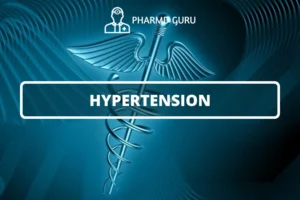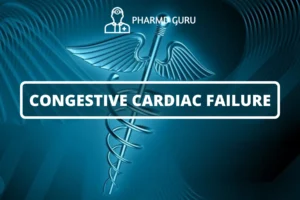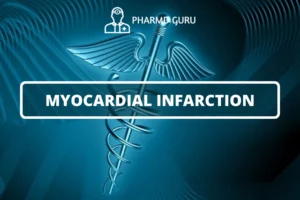Hyperlipidemia refers to the elevated levels of lipids (fats) in the blood, particularly cholesterol and triglycerides. It is a significant risk factor for cardiovascular diseases, including heart attacks and strokes. In this article, we will explore the etiopathogenesis (underlying causes) of hyperlipidemia and discuss the pharmacotherapy options available for its management.
SCROLL DOWN TO THE BOTTOM OF THIS PAGE FOR ACTUAL NOTES.
Table of Contents
- Introduction: Understanding Hyperlipidemia
- Etiopathogenesis of Hyperlipidemia
- Types of Hyperlipidemia
- Risk Factors
- Pathophysiology of Hyperlipidemia
- Clinical Presentation and Diagnosis
- Treatment and Pharmacotherapy
- Lifestyle Modifications
1. Introduction: Understanding Hyperlipidemia
Hyperlipidemia is characterized by elevated levels of lipids in the blood, particularly cholesterol and triglycerides. It is a significant modifiable risk factor for the development of atherosclerosis and cardiovascular diseases.
2. Etiopathogenesis of Hyperlipidemia
The development of hyperlipidemia is influenced by various factors, including:
- Genetic Predisposition: Certain genetic variations can affect lipid metabolism, leading to abnormal lipid levels.
- Diet: Consuming a diet high in saturated and trans fats, cholesterol, and refined carbohydrates can contribute to elevated lipid levels.
- Sedentary Lifestyle: Lack of physical activity and a sedentary lifestyle can adversely affect lipid metabolism.
- Obesity: Excess body weight, particularly abdominal obesity, is closely associated with dyslipidemia.
- Medical Conditions: Certain medical conditions, such as diabetes, hypothyroidism, and kidney disease, can contribute to the development of hyperlipidemia.
- Medications: Certain medications, such as corticosteroids, immunosuppressants, and some antiretroviral drugs, may lead to dyslipidemia as a side effect.
3. Types of Hyperlipidemia
There are different types of hyperlipidemia, including:
- Primary Hyperlipidemia: This type of hyperlipidemia is primarily caused by genetic factors and is not associated with any underlying medical conditions.
- Secondary Hyperlipidemia: Secondary hyperlipidemia is a result of underlying medical conditions, such as diabetes, hypothyroidism, or kidney disease.
4. Risk Factors
Several risk factors contribute to the development of hyperlipidemia, including:
- Family History: Having a family history of hyperlipidemia or cardiovascular diseases increases the risk.
- Age and Gender: The risk of developing hyperlipidemia tends to increase with age, and males are more prone to dyslipidemia compared to premenopausal females.
- Unhealthy Lifestyle: Poor dietary choices, lack of physical activity, and smoking contribute to the development of hyperlipidemia.
- Medical Conditions: Certain medical conditions, such as diabetes, obesity, and metabolic syndrome, increase the risk of dyslipidemia.
- Medications: Some medications, such as oral contraceptives, certain antipsychotics, and diuretics, may contribute to dyslipidemia.
5. Pathophysiology of Hyperlipidemia
Hyperlipidemia is characterized by abnormal lipid metabolism, which leads to the accumulation of lipids in the bloodstream. The pathophysiology involves:
- Increased production of lipids: The liver produces more cholesterol and triglycerides than the body needs.
- Decreased clearance of lipids: The body’s mechanisms for removing excess lipids from the bloodstream are impaired, leading to their accumulation.
- Lipoprotein abnormalities: Dyslipidemia is often associated with imbalances in lipoprotein profiles, including elevated low-density lipoprotein (LDL) cholesterol and reduced high-density lipoprotein (HDL) cholesterol levels.
6. Clinical Presentation and Diagnosis
Hyperlipidemia is often asymptomatic, and its diagnosis is typically made through blood tests. Common diagnostic tests include:
- Lipid Profile: Measures the levels of total cholesterol, LDL cholesterol, HDL cholesterol, and triglycerides in the blood.
- Apolipoprotein B: Measures the levels of apolipoprotein B, a component of LDL cholesterol.
7. Treatment and Pharmacotherapy
The management of hyperlipidemia involves both lifestyle modifications and pharmacotherapy. Pharmacotherapy aims to lower lipid levels and reduce the risk of cardiovascular diseases. Common medications used for hyperlipidemia include:
- Statins: Statins are the first-line treatment for hyperlipidemia. They work by inhibiting an enzyme involved in cholesterol synthesis, thereby lowering LDL cholesterol levels.
- Ezetimibe: Ezetimibe reduces the absorption of cholesterol from the diet, leading to decreased LDL cholesterol levels.
- PCSK9 Inhibitors: These newer medications help lower LDL cholesterol by increasing the liver’s ability to remove LDL from the bloodstream.
- Fibrates: Fibrates primarily target elevated triglyceride levels and can also increase HDL cholesterol levels.
- Omega-3 Fatty Acids: Omega-3 fatty acids, found in fish oil supplements, have beneficial effects on lipid profiles, particularly reducing triglyceride levels.
It is important to note that pharmacotherapy should be prescribed by a healthcare professional based on an individual’s specific lipid profile and cardiovascular risk.
8. Lifestyle Modifications
Lifestyle modifications are essential for managing hyperlipidemia. These include:
- Healthy Diet: Adopting a heart-healthy diet rich in fruits, vegetables, whole grains, lean proteins, and healthy fats while limiting saturated and trans fats, cholesterol, and added sugars.
- Regular Physical Activity: Engaging in regular aerobic exercise, such as brisk walking, cycling, or swimming, helps improve lipid profiles and overall cardiovascular health.
- Weight Management: Maintaining a healthy weight or losing weight if necessary can positively impact lipid levels.
- Smoking Cessation: Quitting smoking is crucial for reducing the risk of cardiovascular diseases.
- Limiting Alcohol Consumption: Excessive alcohol intake can increase triglyceride levels and contribute to dyslipidemia.
ACTUAL NOTES:




